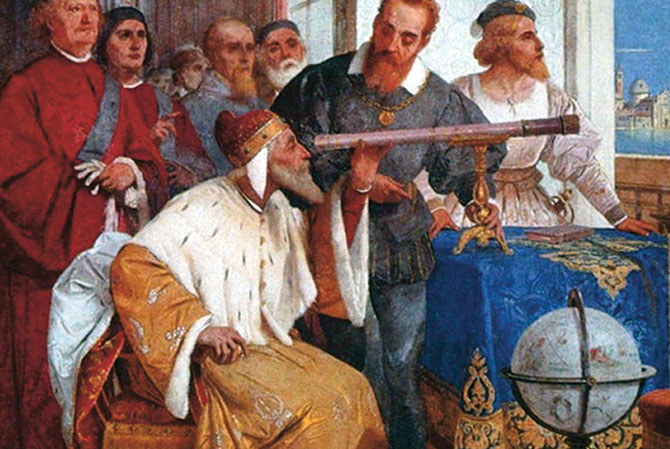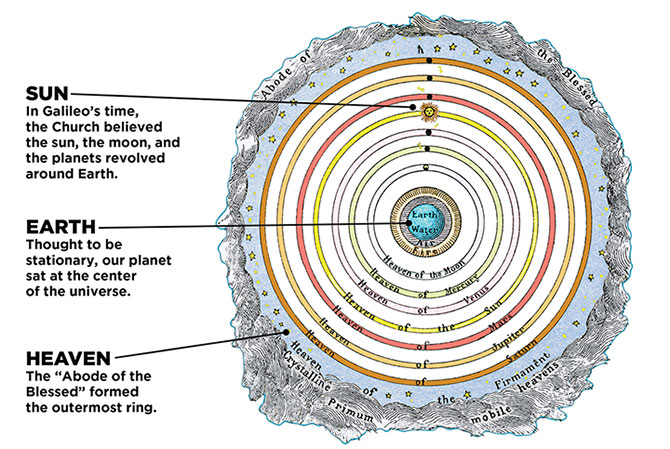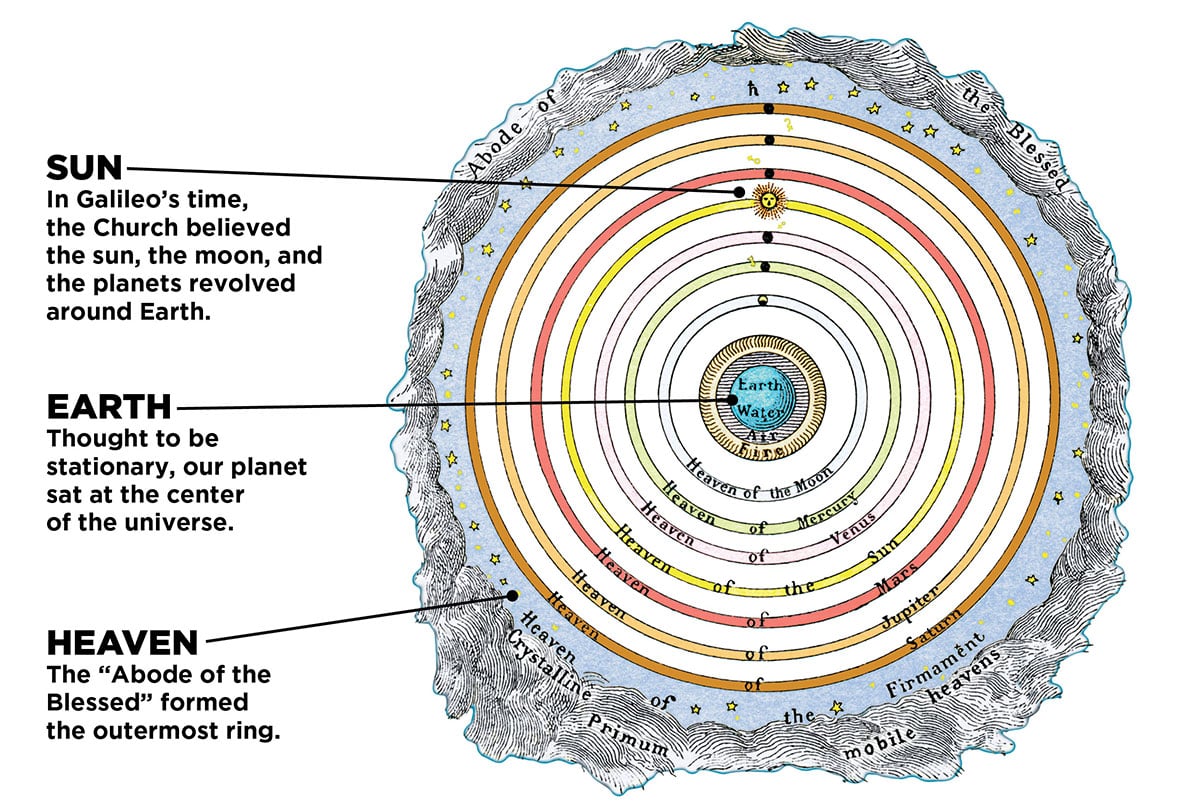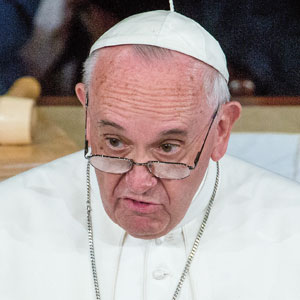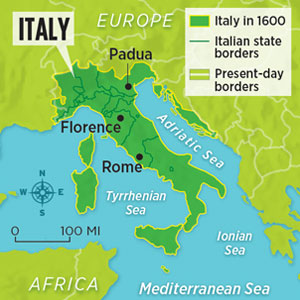
Jim McMahon/Mapman®
Italy, 1600
For centuries, it wasn’t one country, but small, independent city-states.
Narrator A: During the Middle Ages (400s–1400s A.D.), the Roman Catholic Church was the center of life and learning for most of Europe. Challenging the official teachings of the church and its leader, the Pope, was very risky. Anyone who did so could be imprisoned, exiled, or even executed for heresy [holding opinions or beliefs that differ from church teachings].
Narrator B: But in the 1300s, an era of learning and creativity called the Renaissance began in Italy. For the first time, people began to openly question the church’s authority. One of those people was Galileo Galilei (1564-1642), a leader of a new age of experimentation called the Scientific Revolution. Galileo’s findings challenged a central teaching of the church—that the sun and the planets revolve around Earth. Speaking the truth put him on a collision course with the church’s most powerful leaders.

